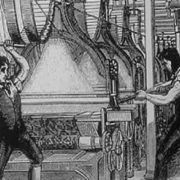Journalists and commentators are trying to instill in us the fear that robotic automation, using artificial intelligence, will eliminate many, perhaps a majority of, jobs. We will all require a universal basic income, we’ll lose the sense of worth that comes with purposeful work, and we’ll have to shift our focus to figuring out what to do with our spare time.
These commentators forget – or, more likely, they never understood in the first place – one of the first principles of economics: customer sovereignty. The customer is king. The customer determines what is produced by the act of buying or not buying. Anything the customer buys or wants to buy – i.e. there exists what the economists call demand – producers will figure out how to produce, and how to produce more and better, and how to produce more variations. If people want jobs, then they will be produced.
Robert Lempert explores this potential for AI to produce more meaningful work for humans in an article he titles Bezos World or Levelers published at AIPulse.
He observes that it is potentially possible that technology could destroy vast numbers of jobs – as many as 40% of the world’s jobs could be replaced in the next 15 years. Skills training, social insurance programs, and universal basic income (UBI) could only nibble at the edges of such a major social transformation.
But Lempert argues that the threat that AI poses to the system of jobs and meaningful work exists only because the giant tech companies that, so far, dominate the application of AI in commerce are deliberately creating the threat to further their own interests. They will make profits from automation, both directly and by selling it to other large corporations who want to substitute computer code and robots for expensive employees.
In order to explain the possibility of a totally different kind of outcome from the current technological revolution, Lempert first goes backwards in history rather than forwards. He returns us to the original promise of free markets. They shattered aristocratic hierarchies and government-chartered monopolies. They promised “a world of independent proprietors, whose few employees would be young apprentices on their way to running their own small firms”. He quotes Abraham Lincoln as a proponent of this vision, and he might have added Thomas Jefferson or even Adam Smith.
But another revolution undermined this happy vision by “creating economies of scale that required vast enterprises to exploit”. While this revolution greatly expanded consumer choice and convenience in travel, electric light, food and clothing, it also generated new hierarchies of power and wealth in large corporations. Industrial age production required large agglomerations of capital, and those reinforced the imbalances of the power hierarchy.
AI, says Lempert, is being deployed by new but similarly large corporations towards a future in which machines do all the work and technology is used to maximize power and wealth in the hands of a small number of companies who own the capital. Why do corporations use AI to replace people with machines? Because that’s their goal.
But it doesn’t have to be this way. Lempert says we can just as easily imagine – and act purposely to create – a very different scenario in which we as individuals use technology to unwind the large corporations and disperse the productive capital into more hands in order to use it better.
He asks why we need these big corporations in the first place. Economists point to transaction costs: productive assets need to be organized within managerial hierarchies associated with large stocks of capital. Today, corporations add centrally managed proprietary data (often gathered from customers), and sell services that enable the collection of the data and the AI learning from that data to make services more efficient and effective.
But AI does not necessarily have to be used in support of centralization of organization and concentration of economic power. It can be used to reimagine the firm and reverse the existing power arrangements. Think of it in the role of helping labor to hire capital, instead of helping capital to dispense with labor. Let’s imagine a small team wanted to join together to build a new kind of car. AI would help them identify others with the skills they need for design and resource assembly, and to rent 3D manufacturing facilities to produce their design. Or AI could help drivers and passengers get together using competing databases without the need of an Uber to own the network. Overall, Lempert says, we could envision an economy of radical equality in social and economic opportunity, in which everyone’s an entrepreneur, finding their highest and best use, and hiring the capital and connecting to the collaborators necessary for efficient production, in a world of abundance, choice and convenience.
What has to change? The way we write algorithms. More specifically, the demand for the scenario that Lempert imagines must drive the producers of algorithms to new forms and designs – algorithms with different goals and functions than those that are common today. Algorithms can “enable individuals to make reasoned and consequential choices about their own lives, to act on those choices, and to evaluate the results in terms of their own goals and values”.
Many of today’s most touted algorithms are designed to reduce this “reasoned and consequential” human choice. Such algorithms start with a clear objective and a set of actions they can take, and they choose the actions to best achieve the objective. Drive this car to that destination without accident. The algorithm determines that the best method is to reduce human involvement. Such algorithms employ predict-then-act analysis, aiming for a single computer-generated understanding of the future and making prescriptive recommendations for action. They are designed to operate independently from human subjectivity and influence.
What if the algorithm had the objective of helping to improve the human experience? It could certainly help individuals gather resources, including skills, capital, and material resources, and connect to appropriate human collaborators. It could help the individual make good choices, examining those choices from multiple vantages and explaining the choices to others. Such algorithms do exist. They are called agree-on-decision algorithms and follow a process called “deliberation with analysis”. They can facilitate a collaborative process of social choice, where everyone recognizes that there can be many competing views and are judged by the extent to which they empower people involved in the process to make what they subjectively regard as meaningful choices. Do you want purposeful work? Then choose it. AI can help.
In other words, it all comes down to demand. What kind of a world do we want? Let’s make sure we communicate our preferences to the algorithm producers.













